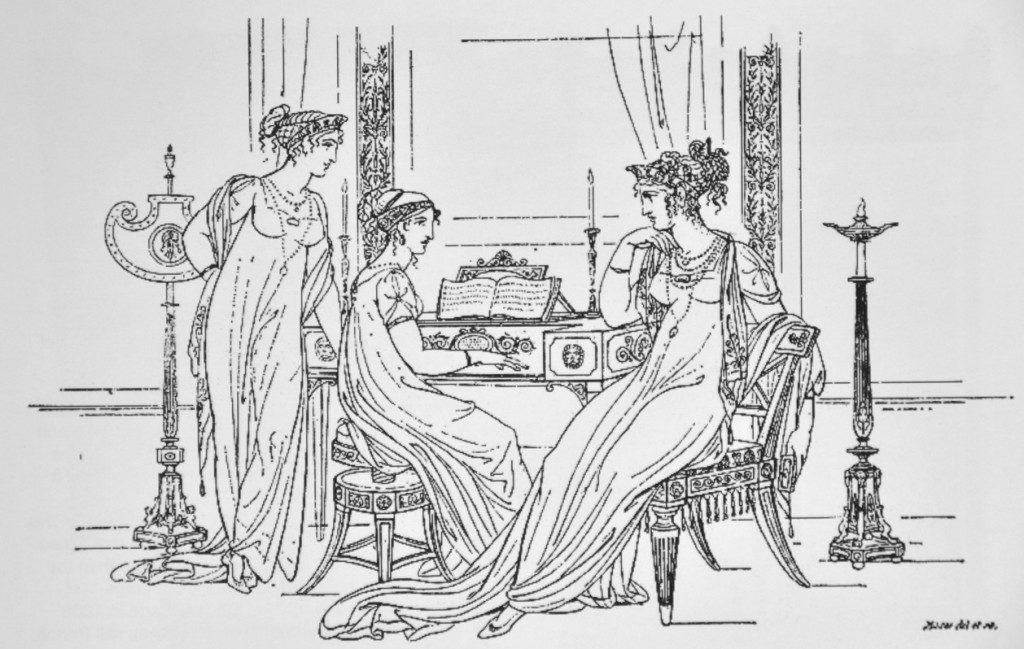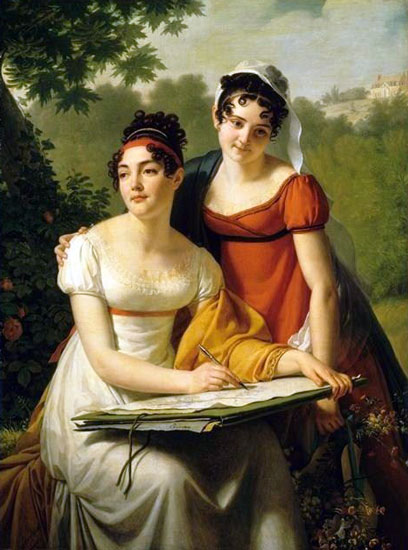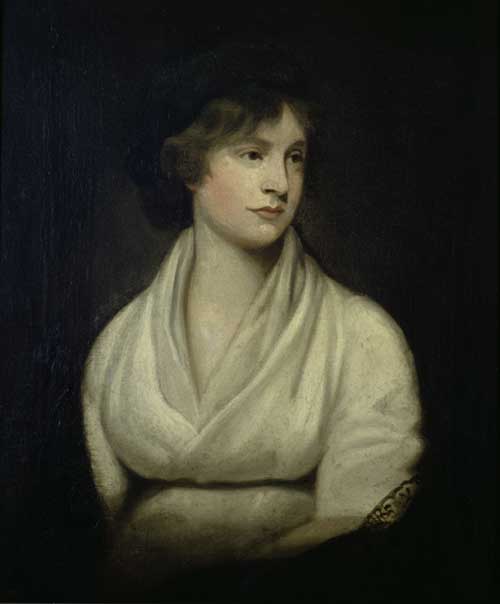
March is Women’s History Month (in the U.S.). It’s also National Reading Month and National Nutrition Month. I thought of writing about how these can be related. (Reading feeds our minds, and how about reading about women? And writing about them, of course.) But instead, let’s talk about real heroines of the Regency period. (See giveaway details at the end.)
Wikipedia lists fifty-three “Women of the Regency Era” who have their own pages. They range from the obvious (Jane Austen) to the notorious (Harriet Wilson) to the questionable (Princess Caraboo). But rather than list them here, or try to even scratch the surface of this topic, I’d like to invite you to chime in with your favorite candidates. Who were the real heroines of our period?

I would hold that merely existing in the period isn’t enough. What qualities do we expect heroines to demonstrate? Courage, for one, I’m sure you’d agree –no matter what time period she lives in. Certainly in real Regency heroines, courage was necessary to pursue any course outside of normal expectations. Tenacity is another one I am sure was needed just to live any kind of satisfying life as a woman in the early 19th century. What else? And who comes to your mind?
Let’s think about the various ways in which women could be “significant”. Which of these women contributed to the betterment of society, or added to the knowledge or literacy of our world? Or gave their support (sometimes invisibly) to men who accomplished significant things? What other ways did they make impacts?
And also, I would make a distinction between fame and significance. Certainly Lady Emma Hamilton’s beauty and choices made her infamous in her own time and famous even today. Do you think she made the best life out of the limited choices she had? Does she belong on the list of significant women?

I’ll start, offering Mary Wollstonecraft. While she lived almost too early to be included, she was only 38 when she died in childbirth, producing the daughter who would become Mary Shelley. That was in 1797, five years after she published her Rights of Women. Can you imagine what her life might have been like, or what controversies she might have stirred up, if she had lived on into the full Regency era? And I would say she gave us a daughter who also became a significant woman of the Regency.
Perhaps I’ll print the names on Wikipedia’s list a bit later this month, after we’ve had some time to discuss this topic. I wonder how many of them we can come up with on our own, and how many we’ll feel can be classified as heroines?
I’ll even offer this: a free ebook to one commenter, either chosen randomly or if one person stands out as offering the most interesting response, by the end of March. Offering a book feels right during National Reading Month!!

Dr James Barry, the woman who had to pretend to be a man to be a doctor. She performed the first Caesarean in Africa in which both mother and baby lived.
Wow! I’ve never heard of her. She sounds amazingly brave and intelligent.
I like yours and Sharon’s, but I’ll share the obvious one, Jane Austen. Not only did she make advances in the art of novel writing, she also put an emphasis on the importance of women’s lives and feelings and contributions. There are some very feminist quotes from her books: “I hate to hear you talk about all women as if they were fine ladies instead of rational creatures. None of us want to be in calm waters all our lives.”
Ooh, Sharon, I am intrigued! Good one! I don’t know Dr. Barry’s story and now I have to go find out about her. This is exactly the sort of response I was hoping for. Let’s raise up the awareness of women like her! Talk about courage and tenacity, and it sounds like she also had to have a strong dedication to help people through medicine. That’s a real heroine!!
Elena, Jane Austen is a classic, which is why I mentioned her being on the Wikipedia list, but your articulation of her significance is very well expressed. We can see why you’re a writer!! 🙂 Thanks for chiming in!
Mary Anning… an English fossil collector and palaeontologist who became known around the world for her important finds in the cliffs along the English Channel at Lyme Regis. Her findings contributed to important changes in scientific thinking about prehistoric life and the history of the Earth. She’s inspired my regency set WIP.
I love the fact that she actually managed to get her findings accepted and recognized. Another great one! And I love that she’s inspired your wip. I want to read it!! Good luck with it and be sure to spread the word to us here when it comes out, Trish!!
She’s another lady I admire greatly. Someday I hope to get to Lyme and see her fossils.
I’m glad you included Mary Anning. I would also add that she was only an uneducated 16 year old girl who worked for her father at the little shop that sold fossils in Lyme Regis before finding the first intact icthyosaur. Talk about tenacious. I did get to visit her museum and her grave. And she got a cameo in one of my books.
Mary Reibey: transported to the penal colony of New South Wales for the theft of a horse, she became a successful business woman and property owner in her own right. She appears on the Australian $20 note.
(I would havd nominated Caroline Chisholm, but she was only born during the Regency)
I have to admire anyone who so successfully starts her life over again, especially under such challenging circumstances! Thanks for bringing her to our attention, Harriet. She definitely sounds like a heroine to me!! And those of us outside of Australia often don’t hear these interesting bits of history.
Right. I’ve never seen an Australian $20 note let alone could tell you who appears on one. Harriet sounds like a worthy woman to appear on currency.
Well, the 0bvious ones are Jane Austen and Mary Shelley! I’m a literary person but I admire those who can do what I can not. Some of my other favorites include Ada Byron Lovelace (1815-1852) whose notations on Charles Babbage’s proposed “analytical engine” make her the first computer programmer! I don’t have that kind of brain myself and am in awe of her talent. Another woman in STEM in the Regency period is Caroline Herschel, a significant astronomer who discovered several comets and assisted her more well-known brother with his work and kept his house. Another lady I admire is the commander of Napoleon’s balloon army, Sophie Blanchard.
QN Pooh Bear, thanks for visiting!! All three of these heroines are great ones. Even today not enough women get involved in STEM fields. That they did it in the Regency took a lot of courage to go against the norm. (I consider commanding a balloon army related to STEM because of the balloons!) I’ve heard of (and share your admiration for) the first two, but never Sophie Blanchard. Now I have another fun one to learn about!! Thanks for sharing them with us.
Sophie Blanchard was the first women to pilot her own balloon and the first to make ballooning her career. A career for women in the 19th century was pretty rare, let alone in the new fad of ballooning. Just looking at the drawings of her makes me queasy but wow!
Sophie Blanchard may have been coerced by her awful husband, was terrified to ride in a carriage yet found ballooning exhilitaring! Sadly her story has a tragic ending. I actually learned about her from a novel and then had to look up the true story, which is even more interesting than fiction!
QN Pooh Bear, I would love to read that novel. Do you remember what it was called, or the author? Thanks so much for adding these tantalizing details about Sophie. Sad that she met a tragic end!
Ada Lovelace. Creator of the computer and daughter of Lord Byron.
Judy, thanks for joining in! That makes two people who’ve suggested her, and her accomplishment is certainly worthy to be better known.
For STEM heroines, I would add Mary Somerville, who shared with Caroline Hershel the achievement of being the first female members of the Royal Astronomical Society. Mary’s strength was more in mathematics and algebra, but she branched out into other areas where she wrote books on chemistry, magnetism, physics and math that were used as textbooks for almost a century. She also translated the seminal astronomical book, The Mechanisms of the Heavens by LaPlace. She also started schools for girls and children of the middle and lower classes in Britain.
She certainly belongs on our list, Eileen!! Thanks for adding her. What a lot she accomplished in her lifetime, right? The education of the middle class and especially the poor is an issue dear to my heart, and one that was just beginning to gather energy behind it during the Regency. Strong headwinds, especially for a woman. I talked about one of the pioneers, the Cobbler of Portsmouth, in a post last June ( https://authors.riskyregencies.com/2018/06/01/teaching-urchins-another-unsung-hero-or-regency-roots-of-educating-the-poor/ ) Sorry I don’t know how to make this a link, in a comment!! 🙂 Thanks for popping in, Eileen!
Hannah More and Mrs. Coutts, . Though Miss More is denigrated some for her religious views, she did write plays — which made money before she turned against the theatre. She also had Sunday schools to teach people to read. She wrote and published books for them to read after she taught them because she feared just reading the scriptures might not be enough. She was active in the abolition movement. Lady Jersey and Mrs. Coutts owned shares in banks and were active in the management of them. Coutts was a philanthropist as was her heir, her step grand daughter Angela, Lady Burdett -Coutts. They gave the lie to the opinion that women couldn’t handle money
Oh, good ones, Nancy! Thanks for offering them. Again, making advances in education and attitudes towards women. More was elderly by the Regency, but she was still writing and still actively encouraging anti-slavery sentiment. Her novel published in 1809 was very popular. Every incremental step towards change builds towards the day when change actually happens. These women definitely deserve our recognition and thanks, for their courage and contributions to society.
Adding to the STEM theme, Ellen Hutchins contributed hundreds of specimens and drawings to the study of plants. She was well regarded during her short life (died at 30 in 1815) and has quite a few plants named after her, all native to the areas of Ireland where she lived. Her legacy can be seen in major museum collections and is celebrated at the Ellen Hutchins Festival (annual event since 2015). I like that Ireland’s first female botanist is being recognized by the wider public now.
Another pioneering woman I like is Etheldred Benett, one of the first female geologists in Britain. Her collection of Wiltshire fossils was extensive, and she was respected by many in the field. Since she had her own money, she even published her own monograph. Her wonderful name could be confusing to some and led to the unexpected: She was awarded membership in the Natural History Society of Moscow, and Tsar Nicholas I granted her an honorary doctorate. They did not realize she was a woman.
Both of these women contributed to our understanding of the world we live in, leading to greater knowledge and discoveries. And both are worthy of inspiring our vision of Regency heroines. Love this topic!
Oh, Emily, these two are also wonderful!! I am enjoying everyone’s offerings so much. The story about Etheldred Benet’s honorary doctorate is just priceless. And what a name!! There has to be a story there. Thank you so much for adding these women!